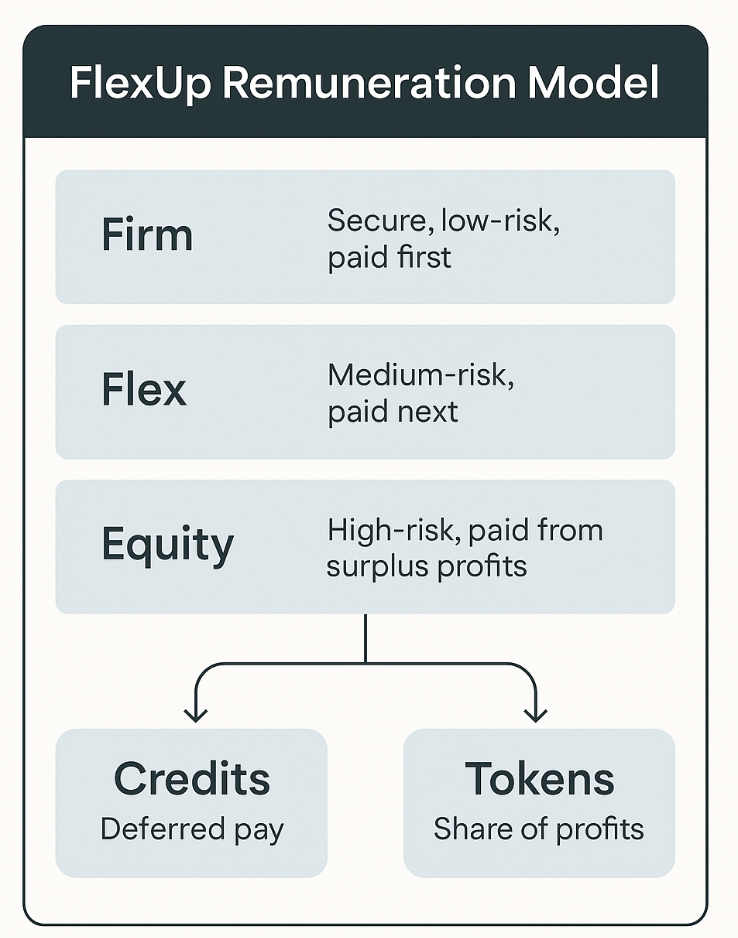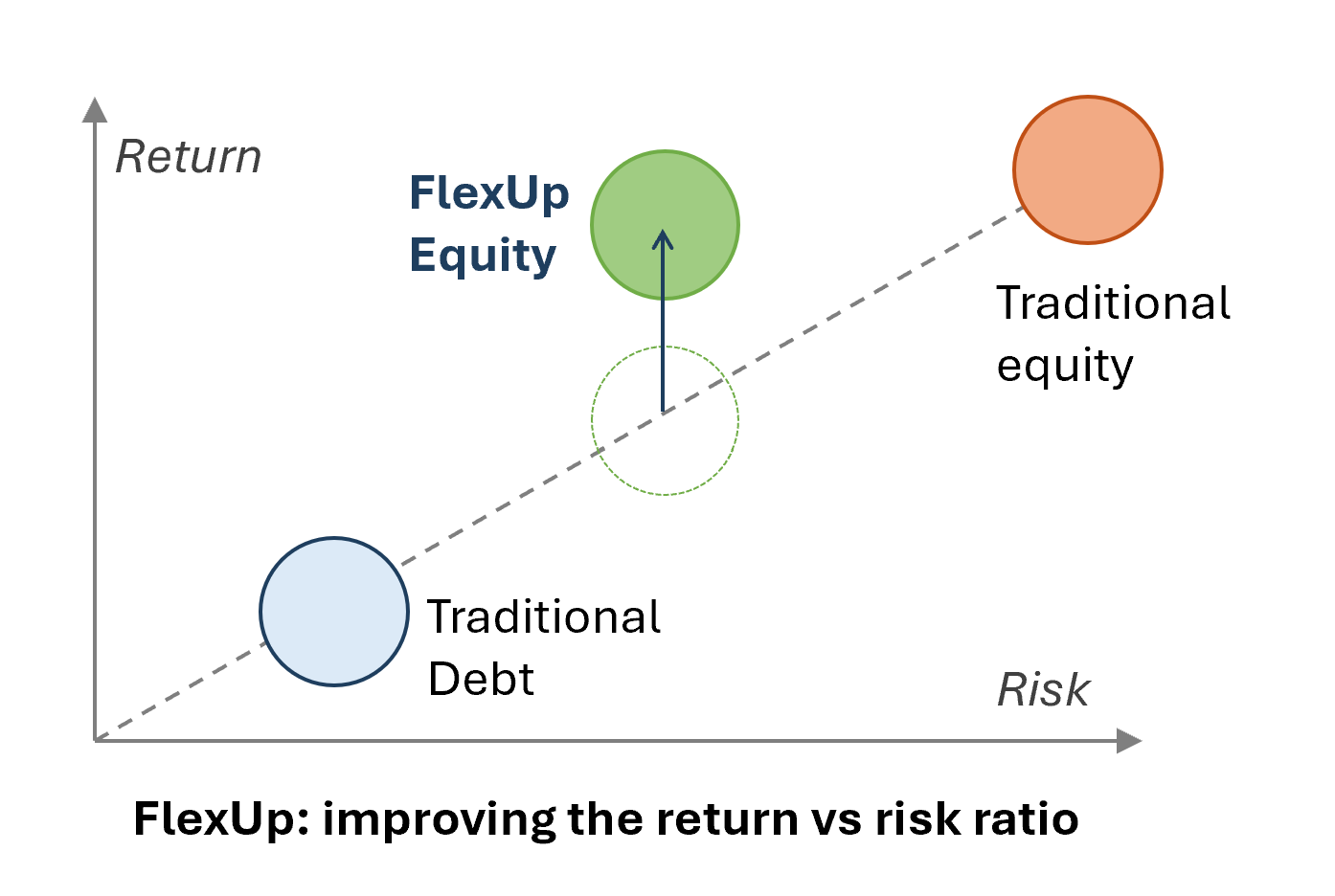For family offices and other long-term investors, the goal isn’t just to generate returns – it’s to build resilient, lasting enterprises that create a positive legacy. But the traditional investment playbook often forces a false trade-off: maximize short-term shareholder value, or foster the qualities that ensure long-term survival and success.
In most companies, the financial risk is concentrated almost entirely on investors. Employees, suppliers, and management often have different – and sometimes conflicting – incentives. In downturns, fixed costs become a crushing burden, and the only levers left are layoffs, supplier defaults, or emergency capital injections, all of which harm the company’s long-term prospects.
A New Framework: From Concentrated Risk to Shared Resilience
FlexUp rewires a company’s financial DNA around two core principles:
- De-risking the venture through a flexible cost structure.
- Boosting performance through perfectly aligned incentives.
1. De-Risking Through Shared Risk
In the FlexUp model, every stakeholder – from senior executives to entry level employees, from strategic clients to key suppliers – can structure their remuneration across three priority levels:
- Firm – A secure, low-risk portion paid first.
- Flex – A medium-risk portion paid next, only if there’s enough cash after Firm commitments.
- Equity – A high-risk portion paid annually from surplus profits after all other obligations are met.
This high-risk Equity tranche is composed of two instruments:
- Credits – These represent deferred remuneration, similar to a shareholder loan, and are reimbursed when the company generates surplus cash.
- Tokens – These function like shares, granting rights to a proportional share of future profits, rewarding participants for the risk they take. They also grant voting rights on some allocation decisions that deviate from the pre-agreed rules.

This adaptable structure means that when times are tough, the company’s cost base automatically adjusts. Investors aren’t left carrying 100% of the downside, and the business avoids the panic cuts that can cripple its future.
2. Boosting Fundamental Performance
Sharing risk is powerful, but sharing rewards is where the real transformation happens. 💡
Participants who take on more risk by accepting remuneration in Flex or Credits are rewarded with Tokens. These Tokens grant a tangible stake in the project’s future success by giving holders a right to a share of future profits and a voice in governance.
This elegantly solves two of the most persistent challenges in business:
- It solves the principal-agent problem. With "skin in the game," everyone’s incentives are aligned with the company’s long-term success. When the company wins, all stakeholders who contributed to that success win.
- It rewards true contribution. Tokens are allocated based on the actual value provided and the risk taken by each participant, creating a transparent and truly merit-based culture.
When employees, suppliers, and partners hold Tokens, they think and act like owners – driving innovation, collaboration, and operational excellence.
Why This Matters for Family Offices
Family offices are uniquely positioned to benefit from this model because they typically:
- Value capital preservation alongside growth.
- Seek measurable impact as well as financial returns.
- Cultivate close, long-term relationships with their portfolio companies.
FlexUp strengthens all three pillars by building resilient, high-performance companies with lower downside risk, stronger operational fundamentals, and a collaborative culture that sustains growth for decades.
Ultimately, this creates a superior risk-return profile for the investor. 
As the chart illustrates, traditional investing presents a linear trade-off between risk and reward. The FlexUp model breaks from this convention. By sharing downside risk across a wider pool of stakeholders, it offers better capital preservation than traditional equity.
Simultaneously, by aligning all participants to boost fundamental performance, it unlocks significantly more upside potential than traditional debt. This creates an attractive asymmetrical profile, allowing investors to target higher returns without taking on commensurate risk.
The Bottom Line
FlexUp doesn’t just do the "right thing." It does the smart thing.
By aligning interests, sharing risks, and fostering genuine collaboration, it helps investors back companies that are stronger, more adaptable, and better equipped to thrive in any market environment.
For family offices, private equity firms, and other patient investors, this is a way to shift the balance from chasing short-term spikes to building lasting, compounding value.
Read more
- Questions & Answers
- Other articles from our blog:
Investing in Resilience